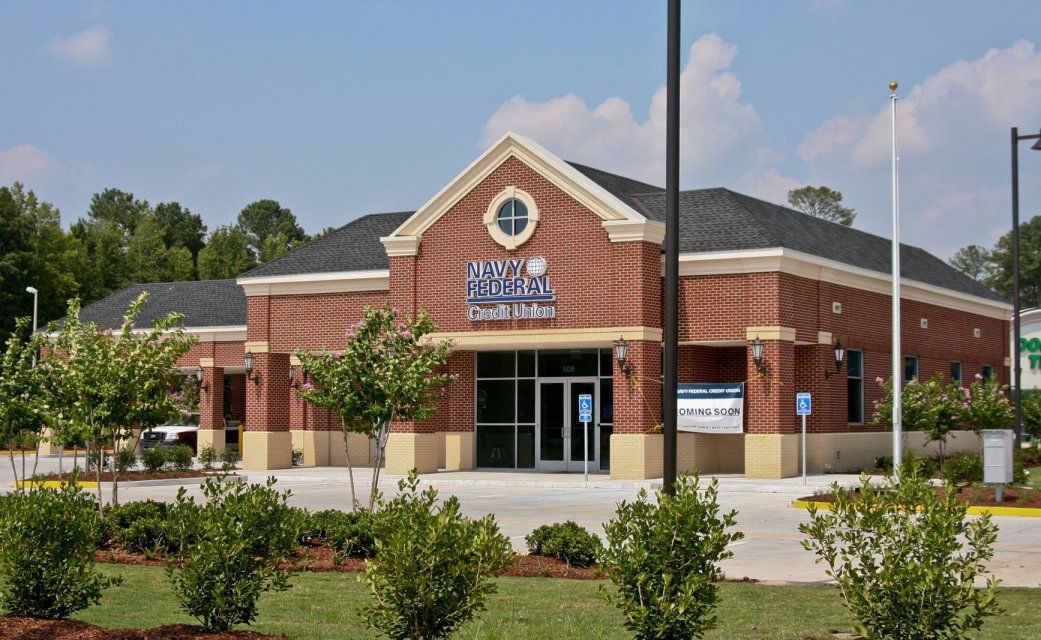In the past, big banks were the go-to for checking accounts, savings accounts, and other financial products. Recently, however, more and more people have begun to transition away from traditional banks and traditional banking services.
This is mainly because traditional banks offer expensive overdraft fees, low APYs, minimum balance requirements, and other inconveniences.

Fortunately, there are many traditional banking alternatives that offer financial services and can provide you with higher interest rates, lower fees, great customer service, and other perks. So if you’re in the market for an alternative to your current bank, keep reading to learn more about your options.
Best Alternatives to Traditional Banks
Each option below gives you another way to manage money without relying on a traditional bank. Whether you want higher interest, fewer fees, or stronger digital tools, one of these may be a better fit.
1. Credit Unions
Credit unions offer many of the same services as banks—checking accounts, savings accounts, and loans—but operate as member-owned institutions. Because they return profits to members, credit unions often provide higher savings rates, lower loan rates, and more personalized service. Funds are federally insured by the National Credit Union Administration (NCUA) up to $250,000.
Membership is required, and while some credit unions have broad eligibility, others limit access to certain communities or professions. Another drawback is that some credit unions lag behind banks in online and mobile banking technology.
Examples of well-known credit unions include Alliant Credit Union, PenFed Credit Union, and Navy Federal Credit Union.
2. Online Banks
Online banks have surged in popularity thanks to their convenience and lower costs. Without the overhead of physical branches, they can offer higher interest rates, minimal fees, and little to no balance requirements.
The main drawback is the lack of in-person service—you’ll need to handle all transactions digitally. Still, many online banks partner with ATM networks like Allpoint, giving customers fee-free access to cash when needed.
If you’re comfortable with digital banking, options like Ally Bank, Marcus by Goldman Sachs, and Varo Bank are worth considering.
See also: Open a Bank Account Online with No Deposit and Bad Credit
3. Neobanks
Also known as challenger banks or digital-only banks, neobanks are fintech companies that offer apps and other technologies to simplify online and mobile banking. In most cases, these financial technology companies specialize in online checking accounts, savings accounts, or other financial products.
Neobanks invest heavily in technology. Therefore, they’re designed for customers who plan to do most of their banking online or from their mobile devices.
Neobanks are also known for higher rates on savings accounts and tools for money management and budgeting. They differ from online banks in that they don’t have a bank charter and limit their offerings. The most popular neobanks you may want to look into if you think you’ll be better off with a financial technology company include Chime, Current, and SoFi.
4. Cash Management Accounts
Often offered by robo-advisors, online investment firms, and mobile trading apps, cash management accounts (CMAs) let you invest and bank in one place.
While CMAs usually don’t earn much interest, they’re backed by FDIC insurance and often link directly to investment accounts, making it easy to put extra cash to work automatically. Many also provide debit cards, checkbooks, and access to large ATM networks.
A CMA can be a convenient fit if you’re comfortable with investing, but it may feel risky if you prefer traditional banking.
5. Regional Banks
Compared to large banks, regional banks are smaller and serve one or two regions, like the Midwest or Pacific Northwest. It’s typical for regional banks to offer no monthly fees and competitive interest rates on deposit accounts.
In addition, their lending criteria are flexible, so you may have more luck with loans from regional banks if your credit isn’t in the best shape. Regional banks also tend to invest in technology, such as mobile apps, and expand their offerings regularly.
Some of the most popular regional banks in the U.S. include Bank of the West, First Horizon Bank, and People’s United Bank. A regional bank might be a suitable option if you’d like to do business with a locally owned institution instead of a large, national bank.
6. Community Banks
Community banks are smaller banks that are located in specific geographic areas. While they’re widely seen in rural towns, you can also find them in cities. Due to their smaller size, community banks typically offer more individualized service and get to know their customers. Plus, their interest rates are usually lower than rates at large banks.
The downside to community banks, however, is that they’re not as technologically advanced as other financial institutions. In addition, they’re less convenient as they have fewer branches and a smaller ATM network.
If your priority is to develop a relationship with a banker, and you prefer in-person banking, a community bank is likely the way to go. Carver Federal Savings Bank, Fremont Bank, and CB&S Bank are all examples of community banks. You can drive around your local area to find a few community banks that might meet your needs.
7. Payment Services
Payment services make it easy to send and receive money from others. Some options also let you set up direct deposit and load cash at popular retail stores. While each payment service is unique, most of them require you to sign up with basic personal information.
If you’re looking for a true alternative to a traditional bank account, payment services, such as PayPal, Zelle, Venmo, and Cash App are worth exploring. Just keep in mind that their features and services are limited, so you may have to open a checking or traditional savings account eventually. In addition, some payment services, like PayPal, charge fees for certain transactions, like sending money to pay businesses.
8. Prepaid Debit Cards
Popular credit card issuers like Visa and Mastercard offer reloadable prepaid debit cards that are not tied to bank accounts. Here’s how a prepaid debit card works: You preload money onto it and may only spend that amount. For example, if you load $500, then you’ll have a spending limit of $500.
With a prepaid card, you can make in-store and online purchases, pay bills, and withdraw money from ATMs. You may also add cash, receive direct deposits from your job, and make mobile check deposits. Most prepaid debit cards let you manage your account online, but you won’t be able to write checks and may be on the hook for fees for loading money and paying bills.
9. Peer-to-Peer Lenders
Peer-to-peer (P2P) lending lets you borrow money from individual investors instead of traditional banks and credit unions. Typically, P2P lending platforms use automated systems with algorithms to assess potential borrowers and determine their rates and terms.
Even though P2P lending is newer than traditional lending and its investments aren’t FDIC insured, it’s legal and safe, as long as you do your research and choose a reputable organization. If you’re having trouble qualifying for loans, like personal loans, P2P lenders such as Lending Club, Funding Circle, and Kiva might help you out.
10. Online Investment Apps
Also known as online brokerage services, online investment apps are often a solid alternative to traditional banks with investment accounts. These apps are designed to make investing easier and more affordable. M1 Finance, for example, will allow you to create and maintain a diverse portfolio of stocks and ETFs for free.
There’s also Robinhood, which makes it a breeze to buy and sell stocks for free at market price. Online investment apps might be worthwhile if you’d like to invest your money, without paying steep commission fees or having to adhere to minimum deposit requirements. Since there are so many options out there, it’s a good idea to shop around and weigh the pros and cons of each app.
11. Brokerage Accounts
A brokerage account lets you invest in stocks, bonds, mutual funds, and ETFs. It can be used for both short-term trades and long-term goals.
You can open one through a full-service broker, online platform, or robo-advisor. Keep in mind that some providers charge fees, commissions, or require a minimum balance.
Well-known options include Charles Schwab and Fidelity Investments.
Best Alternatives to Traditional Bank Savings Accounts
Not everyone wants to stash their savings in a standard bank account. Whether you’re chasing higher interest, lower fees, or more control over your money, these savings alternatives might be a better fit.
Money Market Accounts
A money market account combines features of both checking and savings. You can make debit card purchases, write checks, and often earn a higher interest rate than a standard checking or savings account.
Drawbacks include possible maintenance fees, minimum deposit requirements, and limits on monthly transactions. In many cases, you may be restricted to six withdrawals, transfers, or check payments per month.
Certificates of Deposit (CDs)
Certificates of Deposit (CDs) let you set aside money for a fixed period while earning interest. Terms often range from three months to five years or more, and most require a minimum opening deposit.
Longer terms usually pay higher rates, but CDs are less flexible than savings accounts since early withdrawals often trigger penalties. That makes them better suited for long-term savings goals rather than emergency funds.
If flexibility matters, you can build a CD ladder by opening multiple CDs with staggered maturity dates. This way, some funds become available at regular intervals while others stay locked in for higher returns.
U.S. Treasury Bonds
Issued and secured by the federal government, U.S. Treasury bonds are fixed-income securities and one of the safest investments you can possibly make. To purchase them in $100 increments, visit TreasuryDirect.gov.
The most noteworthy benefit of the U.S. Treasury bonds is that they offer consistent income and won’t go down if the stock market takes a hit, as they’re treasury inflation protected securities. Moreover, you won’t be responsible for paying taxes on the interest you earn.
Interest-Bearing Checking Accounts
Interest-bearing checking accounts are checking accounts with annual percentage yields, or APYs that earn interest. An interest-bearing checking account is a lot like a traditional checking account in that you can make deposits via bank transfer, direct deposits, and ATMs.
You may write checks, use debit cards, or transfer funds to withdraw money. Depending on the account, you may have to pay monthly maintenance fees and settle for lower than average interest rates.
Real Estate Investments
When most people think of investing, stocks, bonds, and mutual funds come to mind. Real estate IRAs, however, are powerful yet overlooked investment vehicles. With a real estate IRA, you can diversify your portfolio, enjoy greater returns, and reap some tax benefits. It may be just what you need to meet (or even exceed) your financial goals.
You may also want to consider REITs, or real estate investment trusts, are companies that invest in income-producing real estate. You can buy publicly traded REIT shares, a REIT fund on stock exchanges, or private REITs to generate income.
Bottom Line
You don’t have to stick with a traditional bank to manage your money. Today’s alternatives—credit unions, online banks, neobanks, and even investment-focused accounts—offer lower fees, stronger rates, and tools designed to fit different lifestyles.
The best choice comes down to your priorities. If you want higher returns, look at credit unions or CDs. If flexibility matters, an online bank or neobank might suit you better. By weighing the options and picking the right mix, you can create a banking setup that saves you money and supports your long-term financial goals.
Frequently Asked Questions
Are alternatives to traditional banks safe?
Yes, many are. Credit unions are insured by the NCUA, and banks are insured by the FDIC, both covering up to $250,000 per account. Other options, like cash management accounts, usually sweep funds into partner banks that provide FDIC insurance. Always confirm insurance before opening an account.
Do alternatives to banks charge fewer fees?
In most cases, yes. Online banks, neobanks, and credit unions often eliminate common charges such as overdraft fees or monthly maintenance fees. Still, some alternatives may have costs for things like ATM withdrawals or money transfers, so it’s important to review the fee schedule.
Can I get direct deposit without a traditional bank account?
Absolutely. Many alternatives, including credit unions, online banks, prepaid debit cards, and payment apps, allow you to set up direct deposit. Some even offer early access to your paycheck, letting you receive funds up to two days sooner.
Will I still have access to ATMs if I leave a big bank?
Yes, though access varies. Many online banks and neobanks partner with nationwide ATM networks like Allpoint or MoneyPass. Credit unions often belong to shared branch or ATM networks, giving members fee-free access to thousands of machines across the country.
Which option is best if I want both banking and investing?
A cash management account or an online investment app may be the right fit. These accounts combine spending tools with investing features, making it easy to manage both in one place. Just keep in mind that they may not offer the same level of liquidity or bill-paying options as a standard checking account.




